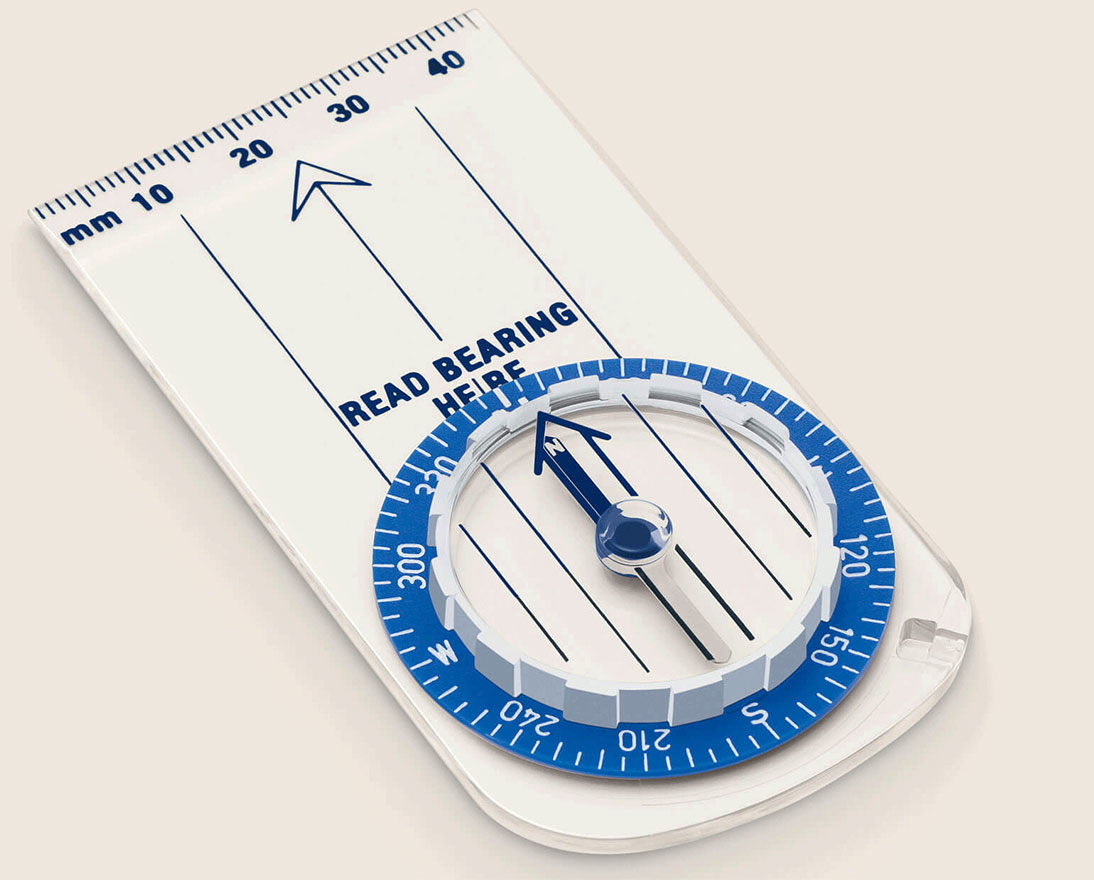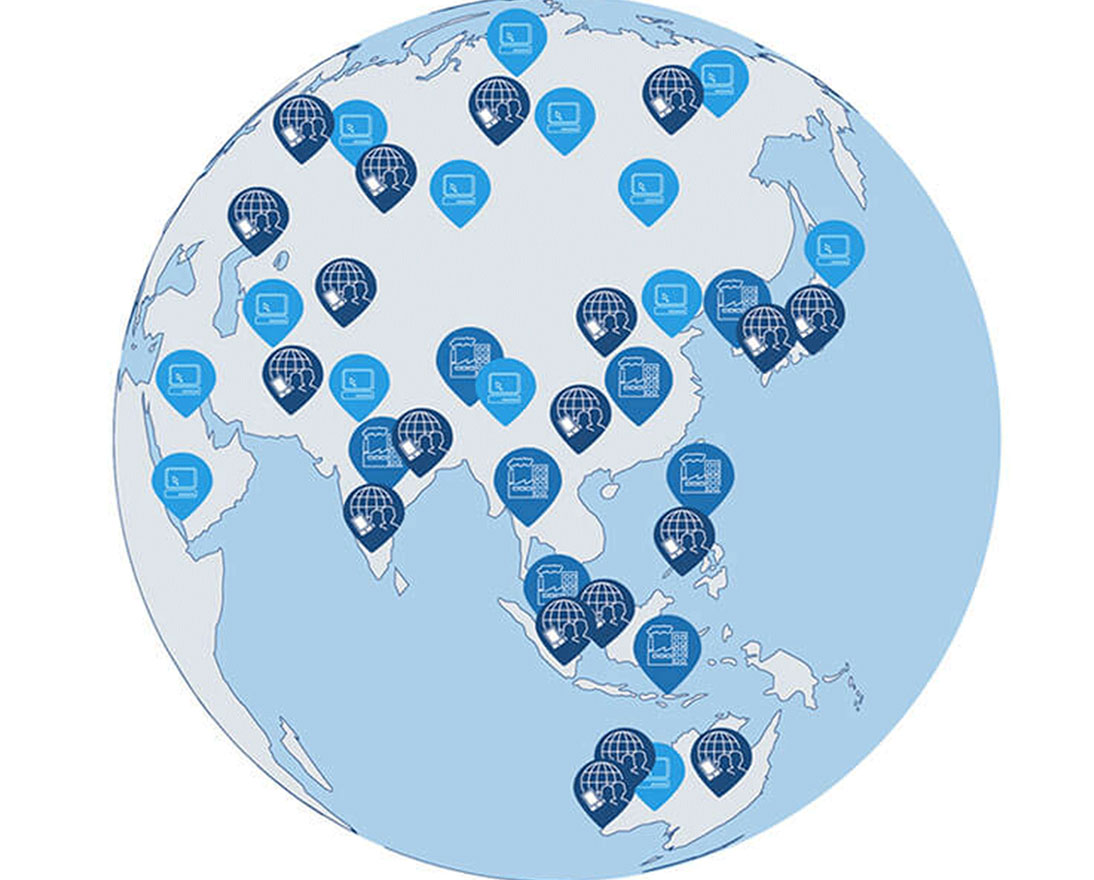The global risks landscape & the risks-trends interconnections maps 2019
Global risksInfographicJanuary 16, 2019
What are the most significant and interconnected risk trends that will shape global development in the next 10 years? Read more about this global risks assessment.
As in previous years, the 14th edition of The Global Risks Report is based on the annual Global Risks Perception Survey (GRPS), completed by 1000 members of the World Economic Forum’s global multi-stakeholder community. Respondents are drawn from business, academia, civil society and the public.
The survey asked respondents to consider 30 global risks categorized as societal, technological, economic, environmental or geopolitical, over a 10-year time horizon. 13 global trends are also considered by the survey.
The survey also asked respondents to assess the developments of key risks over the coming 12 months to gain a perspective on the global risks landscape development for the year ahead.
- Year-on-Year, GRPS found a somewhat similar global risks landscape, but overall GRPS finds that Global risks are intensifying. However, the collective will to tackle them appears to be lacking. Divisions are hardening and the energy now being expended on consolidating or recovering national control, risks weakening collective responses to emerging global challenges. We are drifting deeper into global problems from which we will struggle to extricate ourselves.
- Environmental risks continue to dominate the GRPS results. This year, they accounted for three of the top five risks by likelihood and four by impact. Extreme weather was the risk of greatest concern, but survey respondents are increasingly worried about environmental policy failure: having fallen in the rankings after Paris, “failure of climate-change mitigation and adaptation” jumped back to number two in terms of impact this year. The results of climate inaction are becoming increasingly clear. The accelerating pace of biodiversity loss is a particular concern.
- Technology continues to play a profound role in shaping the global risks landscape. Data fraud and cyber-attacks were prominent again in the GRPS, which also highlighted a number of other technological vulnerabilities: around two-thirds of respondents expect the risks associated with fake news and identity theft to increase in 2019, while three-fifths said the same about loss of privacy to companies and governments.
The Global Risks Landscape 2019
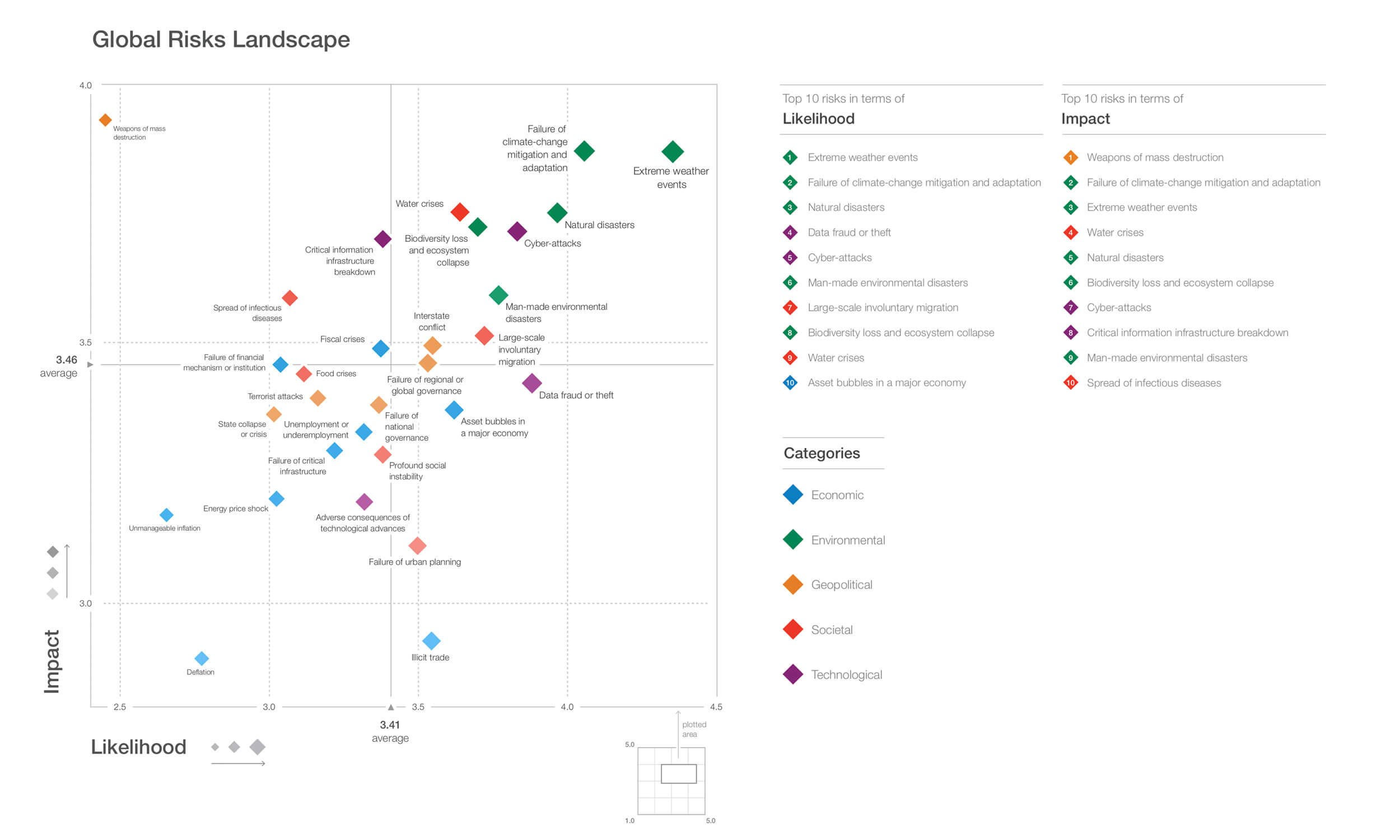
The Global Risks Interconnection Map 2019
To draw the Global Risks Interconnections Map 2019, survey respondents were asked the following question: “Global risks are not isolated and it is important to assess their interconnections. In your view, which are the most strongly connected global risks? Please select three to six pairs of global risks.”
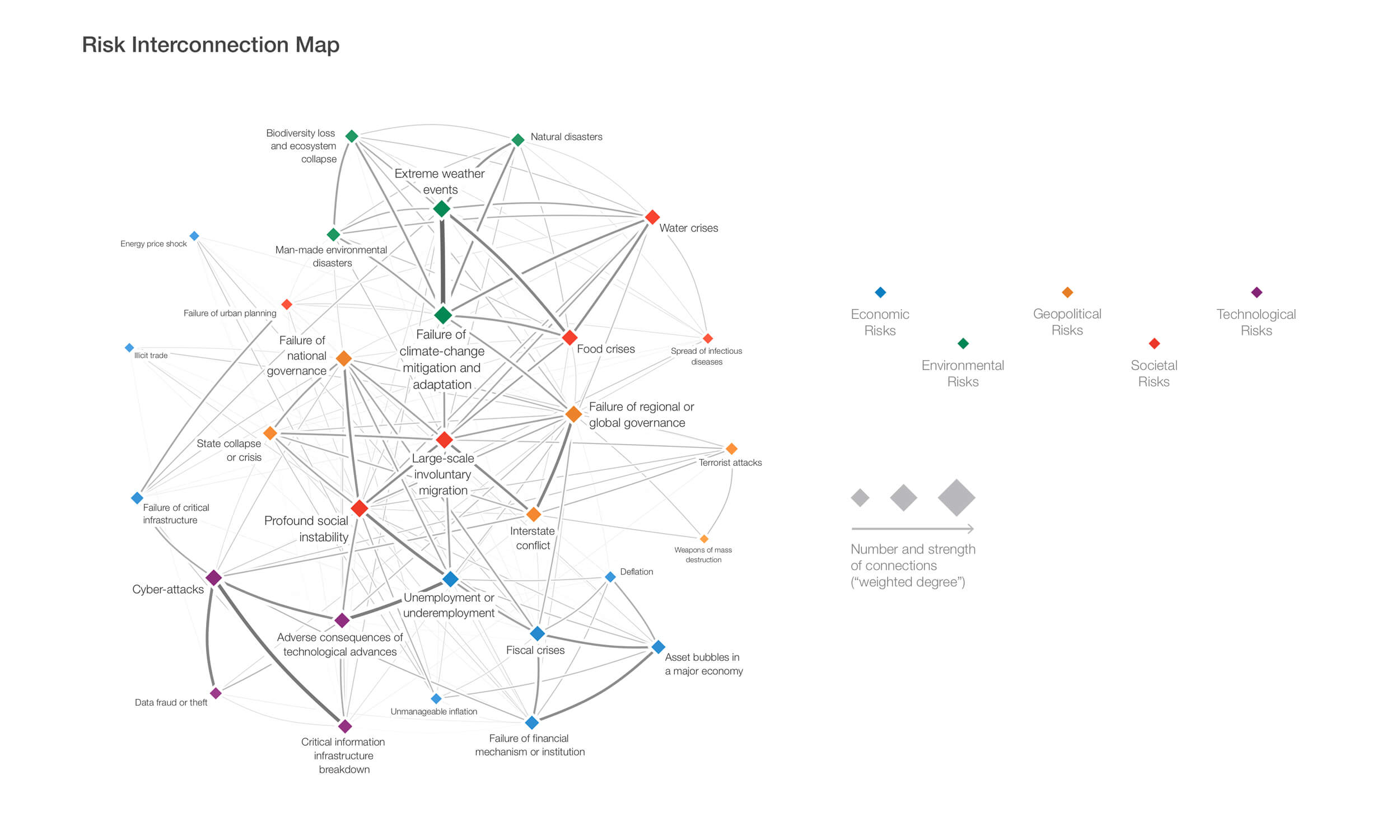
The Risks-trends Interconnection Map 2019
Similarly, for the Risks-Trends Interconnections Map 2019, respondents had to identify up to three trends that they consider important in shaping the global agenda in the next 10 years and the three risks that are driven by each of those trends.
Survey respondents were asked the following two questions: “Which are the three most important trends that will shape global development in the next 10 years?” and “For each of the three trends identified in the previous question, select up to three global risks that are most strongly driven by these trends.”
The information thereby obtained was used to construct the Risks-Trend Interconnections Map 2019.
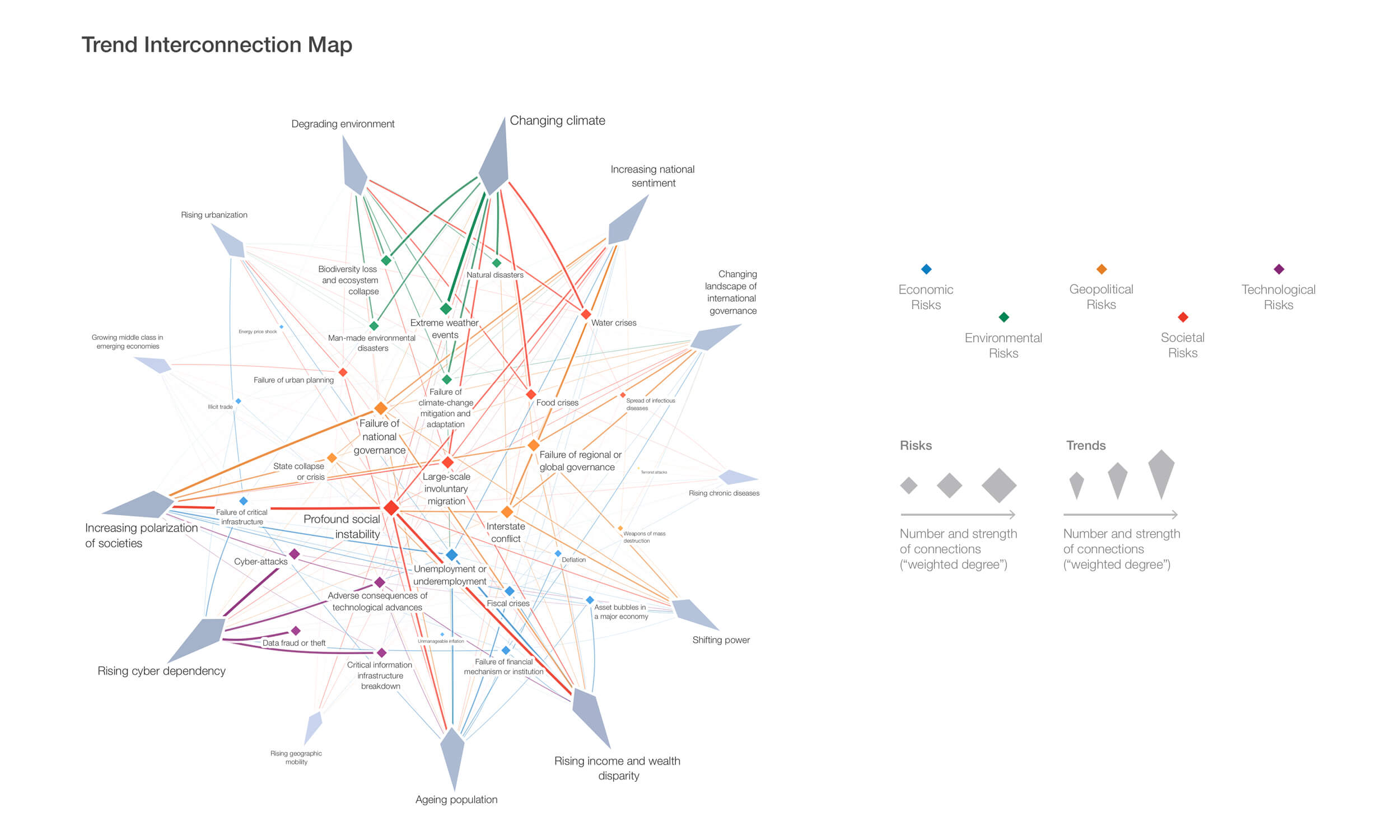
Source: The Global Risks Report 2019, World Economic Forum


